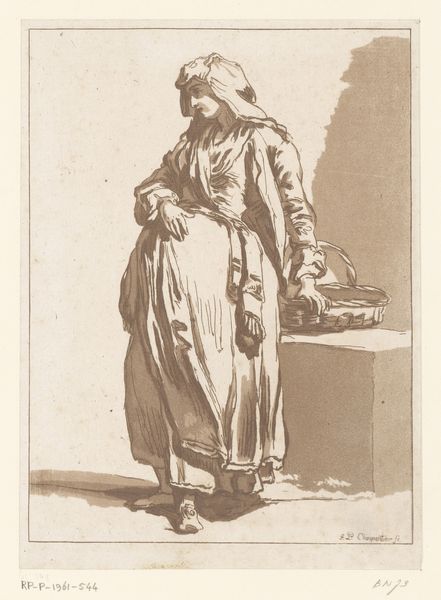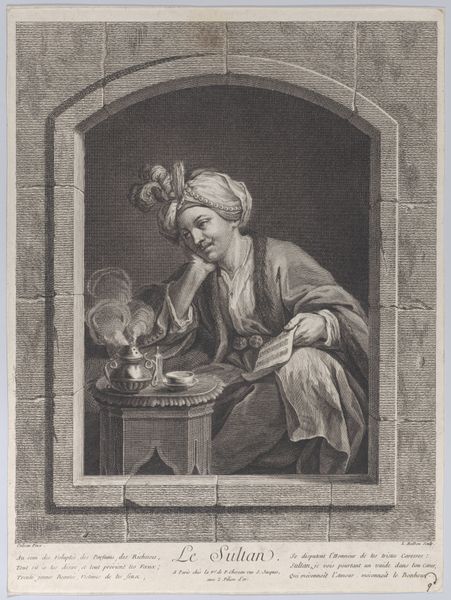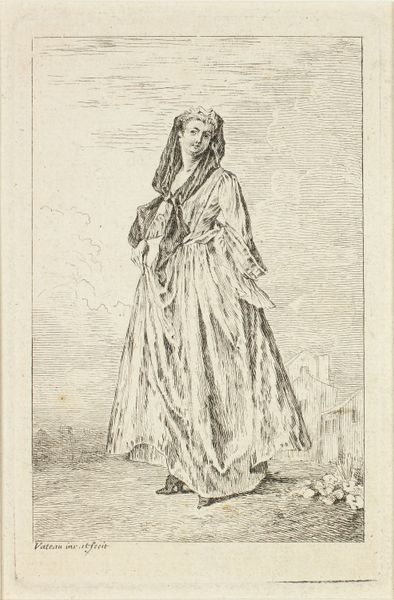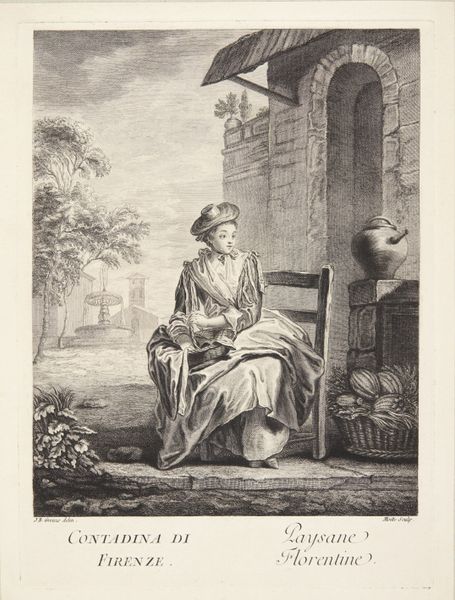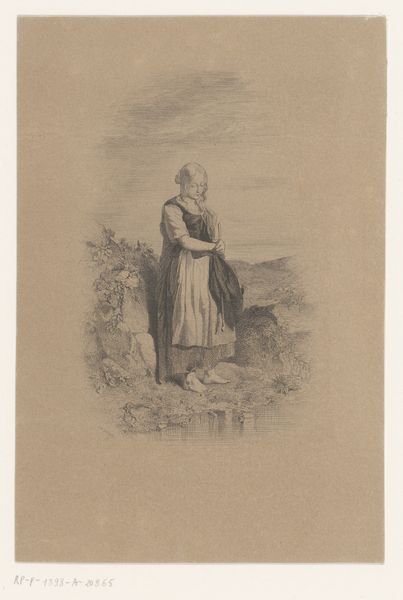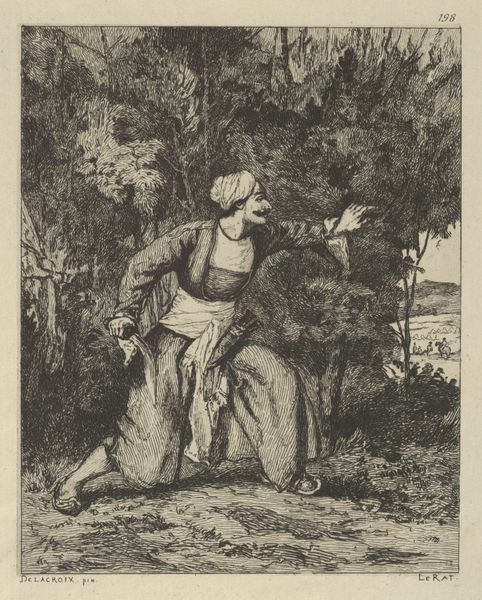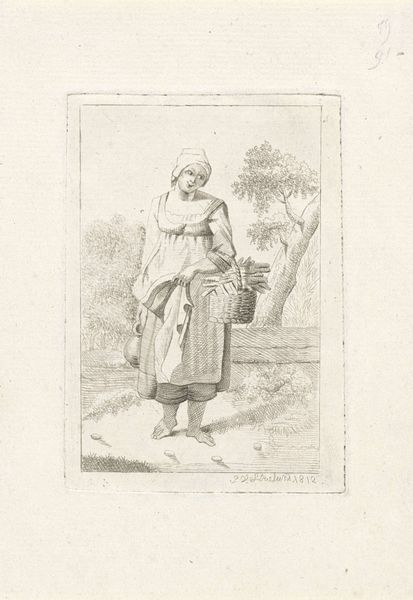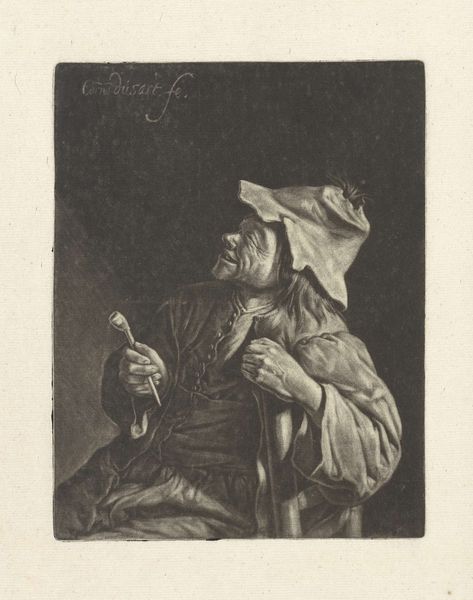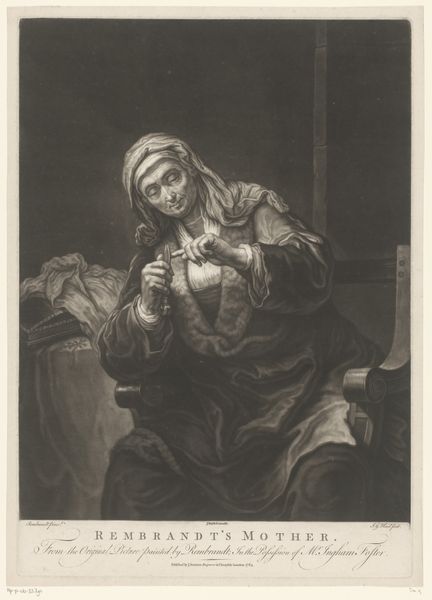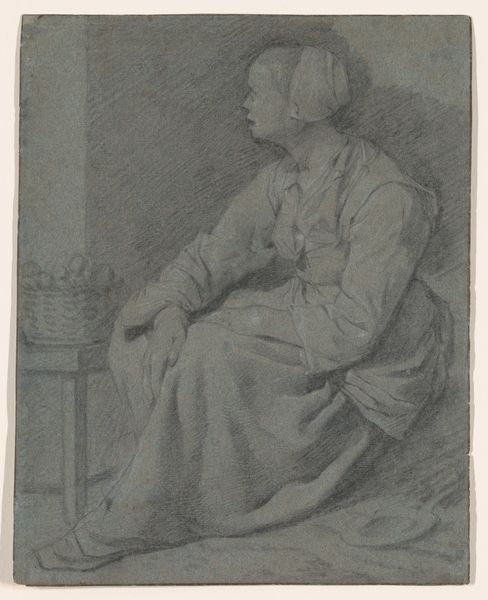
Dimensions: height 428 mm, width 344 mm
Copyright: Rijks Museum: Open Domain
C. Palmieri created this print of an old woman spinning, sometime between 1750 and 1849. In those days, and in many countries, spinning was considered a low-status job and was often performed by poor women. Does Palmieri challenge this view? He titles the print "La Vieille Labourieuse", meaning "The Old Laborer". He has depicted a working woman with dignity, perhaps inviting viewers to consider the value of women's labor. Consider the socio-political and economic structures that might have influenced Palmieri’s work, or been commented on by him. Historical data on class structures and the economics of female labor are extremely relevant here. It would be useful to study demographic trends in Europe at the time, tracing the increase in urban populations and the attendant rise in poverty. Careful historical research will reveal the ways in which visual codes and cultural references create meaning, and how the artist challenges existing social norms.
Comments
No comments
Be the first to comment and join the conversation on the ultimate creative platform.


